#benefits of spices in indian food
Text

We use only premium organic ingredients are used to make organic capsules, which are vitamin. They are made without synthetic improvements, chemicals, or additives in order to boost general wellness, improve health, and supply vital nutrients. These capsules are designed to be easy on the body and preserve the full potency of their contents, making them ideal for those who choose a natural approach to health.
Please visit our website or amazon page to know more about kuorganic organic supplements products.
#all natural#food#moringa powder#natural#organic#indian spices#moringa#detoxification#neem#ashwagandha#spirulina#turmeric benefits#turmeric curcumin#moringa capsule#organic supplements
0 notes
Text

Elevate Your Dishes with the Golden Goodness of SNN Turmeric Powder!
https://snnfoods.com/collections/pure-spices/products/turmeric-powder
0 notes
Text
While the purity of Camellia Sinensis is a marvel in itself, the world of tea extends far beyond the simple leaf that is often called a True Tea. Let's talk about flavor-infused tea.

Infused tea
The practice of infusing tea with flavors dates back centuries, with evidence of flavored teas found in ancient Chinese and Indian cultures. Early methods of infusion involved adding herbs, spices, or flowers directly to the tea leaves during steeping. Over time, more sophisticated techniques were developed, such as extracting essential oils from aromatic plants and adding them to the tea.
Today, infused teas are typically created using one of two methods:
Direct Infusion: The most common method involves adding dried herbs, spices, or fruits directly to the tea leaves before steeping. This allows the flavors to infuse naturally into the tea, creating a harmonious blend.
Flavoring Oils: Essential oils extracted from aromatic plants can be added to the tea after steeping. This method allows for precise control over the intensity of the flavor and can be used to create subtle or bold infusions.
One of the most renowned flavor-infused teas is Earl Grey, a black tea infused with the fragrant oil of bergamot orange. The citrusy notes of bergamot dance harmoniously with the rich, full-bodied flavor of black tea, creating a truly exquisite beverage. Earl Grey is a versatile tea that can be enjoyed hot or iced, and it pairs well with a variety of foods.
Aside from Earl Grey, the world of flavor-infused teas is vast and varied. From the delicate floral notes of jasmine tea to the bold fruity flavors of berry teas, there is a flavor combination to suit every palate.

Pictured above: (top) Jasmine infused green tea from Fujian Tea Import & Export Co., (bottom) Blood Orange herbal tea from Harney & Sons Fine Teas. [Blend: Apple pieces, rose hips, hibiscus, beetroot, orange peel, orange flavor, marigold petals, safflower petals.]
Some of the other popular flavor-infused teas include:
Jasmine Tea: A green tea infused with jasmine flowers, offering a delicate floral aroma and a slightly sweet taste.
Chai Tea: A black tea spiced with cardamom, cinnamon, cloves, and ginger, creating a warm and comforting blend.
Fruit Teas: A variety of teas infused with fruit flavors, such as strawberry, raspberry, or peach, providing a sweet and tangy taste.
Fruit teas are excellent for cold-brewed iced tea. I will cover cold-brewing later, so please look forward to that.
When choosing a flavor-infused tea, consider your personal preferences and the occasion. A delicate floral tea might be perfect for a relaxing afternoon, while a bold and spicy chai tea could be a comforting choice on a cold day.
The choice of infusion depends on the desired flavor profile and the characteristics of the ingredients being used. For example, delicate floral flavors may be best achieved using direct infusion, while strong, bold flavors can be created using flavoring oils.
If you wish to create your own infused tea, that will have to be a separate post. For now, it is enough to be able to identify the tea you are brewing so that you can handle it appropriately.
Brewing infused teas requires a balance of technique and intuition. First, identify the ingredients. When brewing a cup of tea, it's good to know what temperature and length of time to steep your tea for.
A tea labeled "Peach" may be a white tea with peach flavoring, and it may be best to brew it at a temperature appropriate for white tea. Blends may consist of varying ingredients that require different temperatures, so some experimentation may be in order to find the best brewing temperature to get the most of each flavor.

Herbal tea
Beyond the True Tea, there lies a world of herbal teas, each offering a unique blend of flavors and health benefits. Herbal teas are made from a variety of plants, including herbs, spices, and fruits. They are often enjoyed for their medicinal properties, as well as their delicious taste.
As no part of an herbal tea contains the Camellia Sinensis plant, these teas are not considered "True Teas". That does not mean we cannot enjoy them, however.
For the most part, an herbal tea will not contain any caffeine, unlike the tea produced from the Camellia Sinensis plant. This makes them more suitable to enjoy in the evening or late hours.

Pictured above: (from top to bottom) Roses, honeysuckle, chrysanthemums, mint and lavender.
Some popular herbal teas include:
Chamomile Tea: Made from chamomile flowers, this tea is known for its calming and relaxing properties.
Peppermint Tea: Made from peppermint leaves, this tea is refreshing and aids digestion.
Ginger Tea: Made from ginger root, this tea is warming and can help soothe an upset stomach.
Hibiscus Tea: Made from hibiscus flowers, this tea has a tart, fruity flavor and is rich in antioxidants.
As with many blends, it is helpful to experiment a little with the temperature and steep time to get the most of your tea. Intuition will follow experience.

The ideal steeping temperature for infused teas and herbal teas can vary depending on the specific ingredients and desired flavor intensity. However, here are some general guidelines:
Delicate floral or fruity teas: 175-185°F (79-85°C)
Bold, spicy teas: 195-212°F (90-100°C)
Herbal teas: 175-212°F (79-100°C), depending on the specific herbs used
Serving suggestions: Cream is usually not served with fruit teas, as the acidity in some will cause the milk to curdle. Lemon slices are commonly served with Earl Grey, however, as with the fruit tea, lemon can also cause cream to curdle. Sugar or honey are appropriate for nearly any tea.
It's always a good idea to experiment with different temperatures to find the perfect brew for your taste. I hope this has been informational and helpful to my students who wish to become better acquainted with tea.

29 notes
·
View notes
Note
7. hair-ties or scrunchies?
8. how many water bottles are in your room right now? i have four!
9. which do you prefer, hot coffee or cold coffee?
11. favorite extracurricular activity? (is it ballet? i dont think it is)
21. something you’ve kept since childhood?
26.a scenario that you’ve replayed multiple times?
43. what’s your take on spicy foods?
44. you get a free pass to kill anyone, who is it?
46. favorite holiday film?
see, i even sent you the questions because i'm cool like that <3<3
have fun!
7) hair bobbles or scrunchies?
Well I have about a million hair bobbles just lying about my room and I usually have at least one on my wrist so I'll say hair bobbles. I don't really I have enough hair to use a scrunchie, it doesn't reach my shoulders
8) how many water bottles are in your room right now?
There are two, one that I barely ever use except at like 3 am when I wake up really thirsty, and the other is the one I use all the time. My original version of this bottle got lost/stolen in 2022 so I literally begged my dad to get me an exact replica off of amazon and I love it very much
9) hot or cold coffee?
Iced vanilla latte 🫶🫶 and then I add extra vanilla sugar because if my county is gonna be the "sick man of Europe" then I can at least benefit from it
11) fave extracurricular activity?
My fave is not ballet although it is something that I do. I recently dropped one of my classes (the one on Wednesdays) so now I'm only doing it once a week on Saturday. My favourite is deffinetly swimming though, I don't go as often as I would like but it's nearing summer which means potential sea swimming. Last summer (if you can call it that) me and my friend went to North Berwick and swam in the sea there. Fucking freezing, we came out bright red.
21) Something you've kept since childhood?
A stuffed animal which is a rabbit. She's called Floppy and I got her when I was 6. She has a Jonas brothers t shirt on right now, it serves
26) a scenario that you've replayed multiple times?
Sometimes I wonder what my life would be like if I wasn't an only child, or what would've happened if I had picked the other school over the one I did choose. I'm also constantly replaying the funny things my friends and parents say in my head, I write them all down out of context in samsung notes, I really like it
43) take on spicy foods?
I think they taste great, amazing even. However, this is Scotland. I CANNOT handle spice on any level. The local Indian restaurant recognise my family and tell us it's great to have us back every time, but they also know that I'm gonna be ordering butter chicken. It's banging though
44) free pass to kill one person. Who?
Omg one person?? That's actually really hard I didn't realise how many people I actually kinda despise... probably this girl who ruined my life 2-3 years ago and who now pretends that it's all good cause we're older now and it was just something that happened when we were silly and immature. Like babe no you were absolutely horrible to me. I mean I wasn't great either and did deserve to be held accountable for my actions but that was TOO FAR
46) favourite holiday film?
JESUS CHRIST SUPERSTAR!!!!!!!!! That counts as an Easter film. Not religious but I am a very big fan
7 notes
·
View notes
Text

There are several countries known for having some of the healthiest cuisines in the world, characterized by fresh, whole foods, a variety of fruits and vegetables, lean proteins, and balanced flavors. Some of these countries include:
1. Japan: The traditional Japanese diet is based on fish, seafood, rice, tofu, vegetables, and fermented foods like miso and kimchi. Japanese cuisine is known for its emphasis on fresh, seasonal ingredients and simple, flavorful dishes.
2. Greece: The Mediterranean diet, which is commonly found in countries like Greece, is rich in olive oil, whole grains, fruits, vegetables, nuts, seeds, and fish. The diet is high in antioxidants, healthy fats, and fiber, and is associated with numerous health benefits.
3. Italy: Italian cuisine is known for its emphasis on fresh, high-quality ingredients such as tomatoes, olive oil, garlic, herbs, and whole grains. The Mediterranean diet, common in Italy, is associated with a lower risk of heart disease and other chronic conditions.
4. South Korea: Korean cuisine features a wide variety of fermented foods, vegetables, lean proteins, and grains. Kimchi, a staple in Korean cuisine, is a fermented vegetable dish that is rich in probiotics and has numerous health benefits.
5. India: Indian cuisine is characterized by a wide array of spices, legumes, vegetables, whole grains, and lean proteins like lentils and chickpeas. Many traditional Indian dishes are vegetarian or vegan, making them rich in plant-based nutrients.
6. Thailand: Thai cuisine is known for its bold flavors, fresh herbs, and aromatic spices. Thai dishes often feature a balance of sweet, sour, salty, and spicy flavors, and incorporate plenty of fresh fruits, vegetables, and seafood.
7. Morocco: Moroccan cuisine is rich in spices, herbs, nuts, seeds, vegetables, and lean proteins like fish and poultry. Tagines, a traditional Moroccan stew, often contain a variety of vegetables and are cooked slowly to infuse flavors.
#healthy food#food for thought#food fight#comfort food#fast food#food photography#foodie#food#foodpics#foodlover#japanese food#foodmyheart#tw food#healthy salad recipes#lunch recipes#pasta recipes#pasta recipe#salad recipes#soup recipe#recipe#reciprocity#recipies#recipes#cozy autumn#cozy fall#cozyhome#cozy cozy#cozy living#autumn cozy#cozy art
10 notes
·
View notes
Text
The History and Cultural Significance of Amba Haldi Pickle in Indian Cuisine
Indian cuisine is renowned for its diversity, rich flavors, and the artful use of spices and condiments. One such traditional condiment that holds a special place in Indian culinary history is the Amba Haldi pickle. Known for its vibrant yellow hue and earthy, slightly tangy flavor, Amba Haldi pickle is made from a unique rhizome called Amba Haldi, or mango ginger, which is prized for its health benefits and distinct taste.

In this blog, we will explore the history and cultural significance of Amba Haldi pickle in Indian cuisine, highlighting its roots, evolution, and modern-day relevance. We will also touch on how Amba Haldi suppliers in Oman and exporters are making this traditional pickle more accessible worldwide, and the role of private labeling services in expanding the global reach of this beloved condiment.
1. What is Amba Haldi?
Amba Haldi, also known as mango ginger (Curcuma amada), is a rhizome closely related to turmeric and ginger but distinguished by its unique flavor profile. The name "mango ginger" comes from the fact that it has the appearance of ginger but imparts a subtle mango-like aroma and taste when cut open. This root is widely used in India for its medicinal properties and culinary applications, especially in making pickles and condiments.
The Amba Haldi pickle is a traditional Indian preparation that not only preserves the natural flavor of this rhizome but also enhances its taste with the addition of spices, oil, and salt. It is especially popular in regions like Maharashtra, Gujarat, and South India, where pickling is a deep-rooted culinary practice.
2. Historical Roots of Amba Haldi Pickle
Pickling in India is an ancient practice, dating back thousands of years, with historical evidence suggesting that the art of preserving vegetables, fruits, and roots through pickling was practiced as early as 4,000 years ago. The hot and humid climate of India made it necessary to preserve foods that would otherwise spoil quickly. Over time, pickles became a significant part of Indian cuisine, not just for preservation but also for their flavor-enhancing properties.
Amba Haldi pickle has its roots in Ayurveda, where Amba Haldi is prized for its anti-inflammatory and digestive benefits. It was often pickled to preserve its medicinal properties and make it easily accessible year-round. Many traditional Indian households would prepare Amba Haldi pickle during the mango season, as it complemented the seasonal use of other mango-related condiments.
The medicinal uses of Amba Haldi also extended beyond the kitchen. It was used in various Ayurvedic preparations to treat ailments like indigestion, inflammation, and respiratory issues. This dual role of Amba Haldi as both a food and medicine made it a staple in many Indian homes, where pickling provided a means of preservation that was simple yet effective.
3. Cultural Significance in Indian Cuisine
Pickles, or "achaar," hold a special place in Indian culinary traditions. From simple meals to elaborate feasts, a variety of pickles are served as accompaniments, adding a burst of flavor to the plate. The Amba Haldi pickle, in particular, has maintained its cultural significance due to its unique taste and health benefits.
In Indian households, pickling is often seen as a communal activity, passed down from one generation to the next. The preparation of mango ginger pickle is often part of this cultural practice, especially in regions where mango ginger grows abundantly. The pickle is cherished not only for its flavor but also for its ability to aid digestion, which is crucial in a cuisine that includes rich and complex dishes.
In many parts of India, the arrival of the monsoon season is often associated with the preparation of pickles. Families gather to prepare large batches of pickles, including Amba Haldi pickle, which are then stored in jars and consumed throughout the year. The tangy and spicy flavors of pickles, particularly those made from roots like Amba Haldi, are considered essential in balancing the richness of many Indian dishes.
4. Modern-Day Relevance of Amba Haldi Pickle
In today’s world, Amba Haldi pickle is more than just a traditional food item—it has gained popularity globally due to its unique flavor and health benefits. With the rise of interest in natural and organic foods, many people outside of India are discovering the benefits of incorporating traditional Indian pickles into their diet.
Amba Haldi exporter in Oman and other regions have played a significant role in making this product available to a wider audience. By exporting Amba Haldi pickles, they introduce global consumers to the rich history and flavor of Indian cuisine. This also meets the growing demand for natural, plant-based condiments that offer both taste and nutritional benefits.
Additionally, the rise of private labelling services has further contributed to the expansion of Indian pickles globally. Condiments manufacturers are partnering with businesses around the world to create custom-branded products that cater to local tastes while preserving the authenticity of traditional Indian recipes. This has allowed pickles like Amba Haldi pickle to find their place on the shelves of international supermarkets and specialty food stores, bringing a slice of Indian culinary heritage to global consumers.
5. Amba Haldi Pickle: Health Benefits
One of the main reasons for the enduring popularity of Amba Haldi pickle is its health benefits. Mango ginger, the key ingredient in this pickle, is known for its anti-inflammatory, antioxidant, and digestive properties. Like its cousin turmeric, Amba Haldi is rich in curcumin, a compound that has been extensively studied for its health-promoting effects.
The pickling process also adds certain benefits to the consumption of Amba Haldi. Fermentation, when done naturally, can enhance the bioavailability of nutrients, making it easier for the body to absorb the beneficial compounds found in mango ginger. Some of the health benefits of consuming Amba Haldi pickle include:
Improved Digestion: The spices used in pickling, along with the mango ginger itself, help stimulate digestive juices, aiding in the digestion of heavy and rich meals.
Anti-inflammatory Properties: Amba Haldi has been used in traditional medicine to reduce inflammation in the body. Regular consumption of Amba Haldi pickle can provide a natural way to manage inflammation-related conditions.
Antioxidant Support: The presence of curcumin and other bioactive compounds gives Amba Haldi strong antioxidant properties, helping the body fight free radicals and reduce oxidative stress.
6. Amba Haldi Suppliers and Exporters in Oman
With the growing global demand for traditional Indian pickles, the role of Amba Haldi suppliers in Oman has become increasingly important. Oman, with its diverse population and proximity to India, has become a hub for the distribution of Indian food products, including Amba Haldi pickle. Many Amba Haldi exporters in Oman are capitalizing on this opportunity, supplying both local markets and international clients with high-quality Amba Haldi products.
The export of Amba Haldi pickle from India to Oman and other regions is facilitated by established condiments manufacturers who are equipped to meet international quality standards. This ensures that the pickles retain their authenticity and flavor while complying with the regulations of different countries.
In Oman, Indian food products have a strong presence, with Amba Haldi pickle being a popular choice among the local Indian diaspora as well as other communities who appreciate the rich flavors of Indian cuisine. Private labelling services have further enhanced the availability of these products, allowing businesses to offer custom-branded Amba Haldi pickles that cater to the tastes and preferences of the local market.
7. Private Labelling Services and the Global Expansion of Amba Haldi Pickle
As the demand for authentic Indian condiments grows globally, private labelling services have emerged as a key factor in expanding the market for Amba Haldi pickle. By partnering with condiments manufacturers, businesses can create their own brands of Amba Haldi pickle without the need for extensive in-house production facilities.
This model benefits both manufacturers and distributors, as it allows for greater flexibility in meeting the needs of different markets. For example, Amba Haldi suppliers in Oman can work with manufacturers to create a product that caters specifically to local tastes, while ensuring that the product retains its traditional Indian roots.
Conclusion
The Amba Haldi pickle holds a unique place in Indian culinary history, offering both flavor and health benefits that have been appreciated for generations. Today, thanks to Amba Haldi exporters in Oman, private labelling services, and global interest in authentic condiments, this traditional Indian pickle is finding new fans across the world.
For those seeking a tangy, spicy, and health-promoting condiment, the Amba Haldi pickle is a must-try, representing the rich heritage and timeless appeal of Indian cuisine.
3 notes
·
View notes
Text
okay really i have to know, someone please help me out here.
so the first time I ever tried Indian food was a little over a year ago. My sibling has a close friend who is Indian, so they have more experience in this than I do. One day, they were craving some tasties, and ordered some paneer tikka masala from a little vegetarian-based Indian place ten minutes away. It smelled divine. Having never tried Indian, but curious, I asked if i could try some. They let me have a taste of it, smear-scooped onto some fresh garlic naan.
Y'all. It was so good. It was warm and spicy and complex and lovely. I thanked them for the taste and went back to my own dinner.
They had a ton of leftovers, and a general habit of not eating leftovers. The little half-full tub of enticing spicy heaven sat in the fridge taunting me every time I opened the door. Echoes of the flavor teased at my tongue. So after the paneer tikka masala sat in the fridge for two nights, on the third night, I asked them if i could have the rest and they said go for it.
Now here's the thing. I have, for the past 5 years or so, had some manner of food sensitivity that I have not been able to pinpoint that torments me at least once a week. It is not IBS, and not consistent enough to signal true danger to my health, but is mostly an annoyance. A half-hour to an hour after eating, some nights are spent with tummy cramps and other unpleasantness. Still don't know what's causing it.
But this tikka masala. Whatever is in it, it has the exact opposite effect of whatever component of my typical diet has been tormenting me off and on. Even more so than the flavor, the thing that makes me practically cry every time i have some is just how good my tummy feels. It's warm and satisfied and comfortable, like the intestinal equivalent of being snuggled up on the couch with a cozy blanket and a book on a rainy day.
I've tried looking up common ingredients and recipes for this dish, trying to identify what component it is that's making me feel so good after dinner I could cry. Most of the ingredients I see are fairly familiar and already part of my diet - onion, turmeric, cumin, ginger, tomato, etc. I suppose it could be the yogurt? Or the paneer itself? The restaurant in question described it as cottage cheese or house cheese. I'm not generally a fan of yogurt, but I do eat cottage cheese. I also suspect it could be some spice in the garam masala, which I understand varies depending on the chef. But being of average white bread American stock, I'm not familiar enough with what constitutes good garam masala to know what would go into this spice blend and in what ratios, or if there is some particular variety of yogurt or cheese required for this dish. There's a lot of Indian food and grocery stores in my area, but it's still hard to source a specific ingredient when I can't identify it accurately.
I just want to figure out what this magical digestive-support ingredient is so I can try to incorporate it into my diet more. I just want every meal to sit as well in my body as this one does. If anyone knows anything about Indian food and cooking, and the health benefits of traditional Indian food, I'd appreciate your thoughts!
4 notes
·
View notes
Note
This is def a weird question but what do you think Aegon and amaras fav foods are? My immediate thought for Aegon is just the most unhealthy take out cause ik that boy does not take care of himself but I'd love to hear your thoughts
Ahahah definitely not weird (trust me, I've had all sorts in my inbox) ><
But hmmm actually this is interesting because I don't really think about them eating, and yet it's such an important function for the human body. Also I am assuming this is for Black Hole as it's my only modern fic so I'll be approaching from that angle :')
Aegon was raised in a wealthy family, with a mother who had nannies and other help (probably nutritionists too) so his diet was probably varied and rich in all the nutrients he needed growing up. He developed expensive tastes for things that taste fine, are very healthy, and cost a shitload. But then when he made friends with people outside of his social class, and possibly tasted processed foods for the first time, it was game over. All Alicent's hard work during his childhood is undone as Aegon drives with determination towards becoming pre-diabetic and gorges himself on sweet, salty, fried things to his heart's content. I think at the present moment, he's not eating very well though. Coffee/cigarettes (which is hell's combo to me esp people who have them for breakfast because their breath...) and energy drinks and of course copious amounts of cocaine. He's developed a tolerance to coke just because he does it about as regularly as people take vitamin pills. His culinary tastes are still expensive though, so if he was taking out someone who knows their food, he'd know where to take them and treat them. But his ideal date would be sitting on the kerb eating a greasy kebab from the local Turkish place.
Amara is also hurtling towards pre-diabetes (they inherited their sweet tooth from me, their mother) but hers is a tad more worrying because she comfort/boredom eats. And when what she mostly wants to eat is sugary stuff...weeellll. She does make an effort to have breakfast since Helaena keeps driving in how it's the most important meal of the day. Lucky for Amara, Hel wakes up super early to get her yoga out of the way and then cooks a varied breakfast for both of them (since she also benefited from the way Alicent fed her children when they were little). Amara's eating habits improved a lot after she met Alicent through Criston actually, because ofc Alicent isn't going to exclude her and she was eating dinner with the rest of the Targ kids. When it was just her and Criston, he wasn't as present as he could be but that's because he had to work full time. It was mostly an oven food sort of deal for her which she didn't mind.
Long answer aside, Aegon's favourite food is probably Mexican or Indian (he eats spice like no one's business). Amara's is spaghetti or salmon and potatoes (she also likes Chinese a lot)
6 notes
·
View notes
Link
Get your copy off Eat So What! & Eat to Prevent and Control Disease Boxset (6 Books in 1): https://www.lafonceurbooks.com/l/eswetpacdboxset
#boxset #health #healthreads #author #exclusive #eatsowhat #lafonceur #cookbook #healthylifestyle #cleaneating #mustreads #recommendedbooks #BookishLeague #bookish
15 notes
·
View notes
Text
Unique Cultural Values of India

Background of India
From their rich cultural heritage, uniquely tasty cuisine with abundance of spices, religion and belief system, down to their distinct arts and clothing style, we are here to give you the pleasure of learning and falling in love with India through the simple swipe of your finger.
Our first stop? History! Did you know that the social, economic, and cultural structures that exist in India today are the results of extensive regional expansion? All with its 3,287,263 square kilometers of land glory, the country has earnestly earned the title of being the seventh-largest country in the world. A huge number, isn’t it? It truly means there’s so much wonder waiting to be discovered in this ethno-linguistic home for 1,660,197,571,110 people! By virtue of this, India offers a wide variety of languages, religions, dance, music, architecture, food and customs which differ from place to place within the country. To keep the fun going, let’s ride and get onto our next stop! We can’t wait to show you more.
Unique Cultural Values of India
India is indeed a diverse country. However, now that we know the façade of the country, let us now proceed who really India is with their Unique Cultural Values.
But before anything else, let us have a knowledge what Unique cultural values is:
Cultural values are a series of principles and values passed on generation after generation by our ancestors. Based on the given values, the entire cultural community must decide their own process of life. And those ideas decide how a person of that culture behaves and how they lead their lives.

Collectivism and Harmony
Indians place a high value on Harmony and unity with others, as long as being characterized by what is called collectivism, a principle of giving a group priority through each individual in a community. This system/principle results in a stronger support system from a community or family that anyone can rely on daily.
This culture is important for Indians to help maintain order and Harmony, one application of Collectivism and Harmony is in the field of economics, some parts of India are suffering from economic hardships and unreliability of official services, but this conflict did not stop them, instead they rely on one another to sustain their needs.
Karma, acceptance, and personal Choice
Many Indians have a strong principle of acceptance through one’s life, or a belief that anything they do is being observed by their god. With that being said, Indians have this belief that good people will benefit from their good deeds, while those who made wrong doings will pay the price often in their next time also known as the ‘samsara’(the cycle of rebirth).
The interplay of these social, cultural and religious factors allows people to be accepting of life events and trajectories. However, this is not to be interpreted as Indians being unwilling to take responsibility for life circumstances. Many often contemplate how their actions may impact their future and make decisions accordingly. Some of India's youth are challenging a fatalistic perspective by asserting their free will to choose their vocation, spouse and other life factors. Indeed, as social mobility becomes more common, there is a growing belief that one can change their circumstances.

Greetings
Namaste, which means "I greet the divine inside you," is a widespread greeting used by Hindus in many parts of India especially on ceremonial occasions. Depending on the status of the person you are greeting, this is followed with a nod of the head or a bow. Verbal greetings vary by area and also depend on the relationships between individuals. "Kem cho" ('How are you?') is a typical Gujarati greeting. Muslims can extend a greeting by shaking hands and saying "Salaam" to their counterpart. Shaking hands is generally acceptable between men and women. But it's best to wait till a woman extends her hand first. Some Hindu or Muslim men and women might not want to touch someone who is the other gender.
1. Khuda Hafiz
- This type of greeting Is followed by the Islamic religion by India. They use Khuda hafiz or Allah hafiz as a form of saying goodbye to someone. It is followed by the Muslim community for ages, that simply means “let God be your protector”.
2. Vanakkam
- In the southern part of India, welcoming someone is done by saying Vanakkam, this greeting is practiced by Tamilians, Malayalam, and Lakhans. It is also used when the person is leaving the home.
3. Pranam
- Mainly there exist 6 types of pranam which are ashtanga, sashtanga, panchanga, dandavats, namaskar, and Abhinanda. Pranam is an old form of Hindi mythological greeting that is used to greet to elderly people, people who greet pranam usually touch their feet.
4. Jai Shree Krishna
- Jai Shree Krishna is generally used by all the individuals of India, but especially when you visit Gujarat or meet the Gujarati family, Jai Shree Krishna is the first word you hear from their mouth. Greeting Jai Shree Krishna means hailing Lord Krishna.
However, Unique cultural values do not only appear in greetings, but it can also be shown in their religion, specifically the way they pray.
How Hindu Pray
Hindu worship is primarily an individual act rather than a communal one, as it involves making personal offerings to the deity. Worshippers repeat the names of their favorite gods and goddesses and repeat mantras. Water, fruit, flowers and incense are offered to God.

Family
- In most countries, living in a house only consists of 1-2 generations only. But in India, a single household is formed usually by 3-4 generations. Which resulted due to encouraging people to have a strong relationship with their aunts and uncles just like a parental relationship. Extended families tend to defer to the elderly and observe a clear hierarchy among family members. In more urban areas, people will usually live in smaller nuclear families yet maintain strong ties to their extended family.

Relationships and Marriage
Arranged marriages are common throughout India, though expectations and practices of marital arrangements vary depending on the region and religion. Marriages are typically arranged through a matchmaker, the couple’s parents or some other trusted third party. Unlike in the past where individuals would not be informed about their future partner, it is now more common for the family to consult the couple for consent before the wedding.

Etiquette
In Indian Culture, facing the feet with someone else must be avoided, for this is a sign of disrespect, especially inside the temple, since the feet is the dirtiest part of the body. On the other hand, the head is the most important thing. Touching someone’s head in India is a sign of disrespect or rude.

Visiting
- Indians are known to be hospitable, when people visit their homes, they offer tea to their visitors, but there are times that visitors reject the offer, and this is considered politeness. In addition, saying goodbye when leaving someone’s house is a sign of respect.

Eating
- In India, they usually do not use utensils when eating as they normally use their hands. When eating, the most commonly used hand is the right one as they consider the left hand as the dirty one which is used for cleaning. However, when it comes to the variation of food, there are some Indians that are restricted from eating a certain food, especially Pork for Muslims.

Gift Giving
- The lucky colors for Indians are Red, Green, and Yellow which are usually used for gift wrapping. In India, when men are giving gifts it should be from themselves and their families to avoid misinterpretation. On the other hand, they are particular about the connotation or meaning of the flower which should be learned before giving it to someone.

Communication
- Most Indians are polite and use indirect communication when socializing with other people. They are usually open to hearing other people’s opinions to know the different perspectives, especially during debates to avoid arguments and address this through negotiation instead. Phrases such as “maybe” and “I’ll do my best” are used in India as a way of saying no, this is to avoid any harshness. However, there are times that they are also silent which is considered they are refusing or not agreeing with the discussion. They also use gestures to communicate with people. They usually nod as a sign of politeness, however, there are times when this does not mean that they are agreeing with you. Additionally, using our point finger to point out something, especially when giving directions is accusatory to them. In India, they use the whole hand in pointing out something.
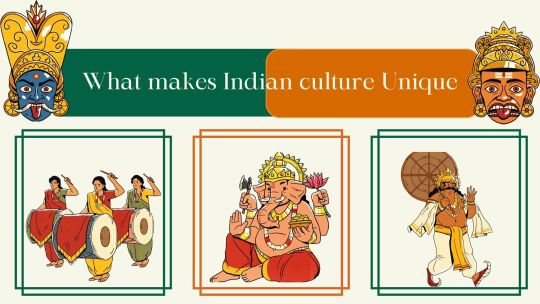
What makes Indian Culture Unique
Indian culture is a fusion of cultures of Hindus, Muslims, Sikhs, Buddhists, Jains, and other Indian tribal communities. Indian culture involves Yoga, Kumbh Mela, celebrating festivals (Diwali, Eid, Baisakhi, Buddha-Purnima, Onam, and many more), clothing, beliefs, customs, ethics, social norms, art crafts, and technologies. Many elements of Indian culture (like mathematics, philosophy, food, etc.) have influenced the world too. Indian culture teaches us to respect each other, be kind, tolerant, and generous.
Indian culture is one of the oldest and most diverse cultures in the world. Still, many Indians stick to their culture. Indian’s way of hospitality, greeting, ethics, belongingness, unity, adapting behavior makes India unique in sustaining its culture more than the rest of the world.

Why people should take time and learn about India
Indian Culture is undoubtedly the oldest and unique culture of the world. Indian culture is teaching us about the right values, which is much above dressing sense or styling. By adopting some changes we can bring a greater result in our life and society at large.

Takeaways from India
- From the world we live in today, there are two barriers that set us apart from one another, and that is the battle of choosing between good and bad. Most of the time, we are just looking for ourselves, without realizing that we must look for others also. But because of India, it gives us a glimpse on what unity really is, and they executed it by just taking the path of culture. One thing that sticks into my mind every time I hear the word ‘beliefs’ is the principle of Karma from India, it made me realize to think first before I act, that gives us a time to reflect on everything we do has consequences. From that, it serves as a stepping stone to make a better world and to be responsible human beings.



47 notes
·
View notes
Text

"Elevate Your Wellness with Cumin's Natural Goodness"
https://snnfoods.com/collections/whole-spices/products/cumin-jeera
0 notes
Text
🔥✨ Burn Fat, Look Young: Unveiling a 300-Year-Old Cooking Secret! ✨🔥
Hey Tumblr fam! 👋✨ Are you ready to spice up your life and transform your health with a time-tested cooking secret that's been around for centuries? 🍲🌿 Well, buckle up because we're about to dive into the world of a 300-year-old culinary gem that not only burns fat but also helps you defy aging! 🕰️🍽️
🔥 The Secret Ingredient: Introducing the Power of Ayurvedic Cooking! 🔥
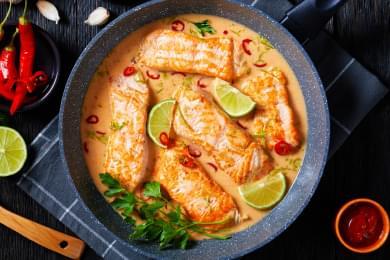



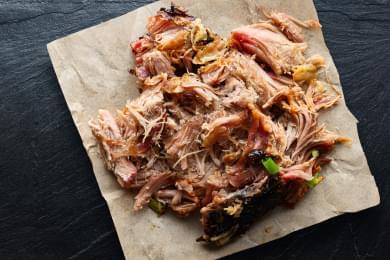
Ayurveda, the ancient Indian system of medicine, has bestowed upon us a treasure trove of culinary wisdom that goes beyond just satisfying taste buds. It's a holistic approach that harmonizes the body, mind, and spirit. 🌱✨
👩🍳 Cooking Techniques That Stand the Test of Time:
Spices Galore: Incorporate metabolism-boosting spices like turmeric, cumin, and ginger into your dishes. These not only add flavor but also kickstart your body's fat-burning mechanisms.
Balance is Key: Ayurvedic cooking emphasizes the importance of balancing the six tastes - sweet, sour, salty, bitter, pungent, and astringent. This balance is believed to promote overall well-being and weight management.
Mindful Eating: Slow down and savor each bite. Chew your food thoroughly, allowing your body to properly digest and absorb nutrients. This mindful approach can contribute to weight loss and anti-aging benefits.
🍵 The Elixir of Youth: Ayurvedic Herbal Teas 🍵
Sip your way to radiance with Ayurvedic teas infused with herbs like holy basil, ashwagandha, and triphala. These herbal concoctions are not only delicious but also packed with antioxidants that combat aging from within.
🥑 Plant-Powered Goodness: Ayurvedic Vegetarian Delights 🥑
Explore the world of Ayurvedic vegetarian recipes that are not just good for your waistline but also for your skin. Incorporate a variety of colorful vegetables, legumes, and whole grains to provide your body with essential nutrients.
🌺 Self-Care Rituals: Beyond the Plate 🌺
Ayurveda isn't just about what you eat; it's a lifestyle. Incorporate self-care practices like meditation, yoga, and adequate sleep into your routine. These holistic habits complement your dietary choices and contribute to a youthful, vibrant you.
Ready to embark on a journey to better health and timeless beauty? 🌟 Embrace the wisdom of Ayurveda, and let the flavors of the past guide you to a healthier, more radiant future. 💖✨ #Ayurveda #HolisticHealth #TimelessBeauty #HealthyLiving #BurnFat #AntiAgingMagic
#Ayurveda#HolisticHealth#TimelessBeauty#HealthyLiving#BurnFat#AntiAgingMagic#AyurvedicCooking#SpiceUpYourLife#CulinaryWisdom#AncientWisdom#HerbalTea#VegetarianRecipes#MindfulEating#WellnessJourney#HealthyLifestyle#SelfCare#YogaLife#MeditationMagic#PlantBasedLiving#NourishYourBody#RadiantHealth#FoodIsMedicine#SipAndSavor#ElixirOfYouth#SpicesForLife#BodyMindSpirit#HealthyHabits#TransformativeEating#FoodForThought#NaturalBeauty
4 notes
·
View notes
Text
Healthy Lifestyle for Glowing Skin and Shiny Hair: Revealing the Power of Ayurveda
Introduction
Welcome to Siya Ayurveda! As we seek a happy and healthy life, we love exploring different ways to feel our best. Here, we dive into the amazing world of Herbal Medicines and Ayurvedic Nutrition, discovering the secrets to a natural glow and energy. Come along on this adventure toward overall well-being as we explore the magic of Herbal Remedies, Natural Skincare, Ayurvedic Treatments, and Wellness Products.
Ayurvedic Nutrition: Nourishing the Body from Within
Understanding the Core of Ayurveda
Discover Ayurveda, the age-old Indian wisdom for a balanced life. It's all about keeping your mind, body, and spirit in harmony. Here at Siya Ayurveda, we make nutrition simple and personalized, following the idea that everyone is unique. Think of it as creating a special diet that suits your own body and energy type. By including Herbal Remedies in your diet, you're giving your body the important nutrients it needs to work at its best.
The Ayurvedic Diet: A Symphony of Flavors and Benefits
Our nutrition buddies recommend adding a mix of colorful foods to your plate, like herbs and spices that are like superheroes for your health. Think turmeric, ginger, and tulsi – they're like magic ingredients that make your food tasty and good for you. These not only help your tummy feel good but also do wonders for keeping your skin glowing and your hair shiny!
Herbal Medicines: Harnessing the Power of Nature
Nature's Pharmacy: Healing Through Herbs
At Siya Ayurveda, we believe in the power of herbal medicines – they're like nature's medicine cabinet. We're super dedicated to bringing you remedies that are not only special but also work. We carefully pick herbs that are known for making you feel better. So, whether it's taking care of your skin or giving your hair some love, our herbal goodies show how amazing nature can be!
Customized Solutions for Skin and Hair Woes
At Siya Ayurveda, we understand that everyone faces different challenges in keeping their skin and hair healthy. Our herbal medicines are made to help with specific things, like acne, eczema, dandruff, and hair loss. These herbs work together to not just make the problems better but also take care of your overall well-being in the long run.
Natural Skincare: Revealing the Secrets of Ayurvedic Beauty
Habits of Radiance: Ayurvedic Skincare Practices
Join us on a self-care adventure with our Ayurvedic skincare routines. Our skincare goodies, from cleaning to moisturizing, are packed with the goodness of Ayurvedic tricks. Using the strength of plant extracts, our special mix aims to clean up, refresh, and feed your skin, giving you that bright and youthful shine.
Ayurvedic Beauty: Beyond Aesthetics
Our Ayurvedic skincare is more than just surface-level stuff – it digs deep to find and fix what's causing skin issues. By helping your insides find balance and detoxify, our skincare lineup works to give you a healthy glow that comes from the inside out. Embrace the magic of Ayurvedic beauty, where your radiant look mirrors your overall well-being.
Wellness Products: Lifting Up Your Lifestyle
Integrating Wellness into Everyday Life
We're all about making life awesome in every way, not just with skincare and nutrition. Dive into our cool collection of wellness products – we've got everything from Ayurvedic supplements to cool lifestyle stuff. Each thing is picked to help you feel balanced, full of energy, and just all-around great.
The Siya Ayurveda Difference
What makes Siya Ayurveda special is how much we care about giving you one-of-a-kind and real wellness stuff. We test our products a bunch to make sure they work, are super pure, and are safe. Believe in nature's awesomeness, live a wholesome life, and feel the amazing changes Siya Ayurveda brings.
Conclusion
On the road to a healthy life with glowing skin and shiny hair, think of Siya Ayurveda as your guide to feeling awesome all around. We bring together cool stuff like Herbal Medicines, Ayurvedic Nutrition, Herbal Remedies, Natural Skincare, and lots of Wellness Products. Come join us on this journey to make your life more colorful and balanced!
#Dr. Megha Chaturvedi#healthy lifestyle#healthcare#self healing#healthy living#Herbal remedies#Natural health solutions#herbal medicine#wellness retreat#Ayurveda products#Herbal medicine#Natural skincare#Ayurveda practices#Holistic healing
2 notes
·
View notes
Text
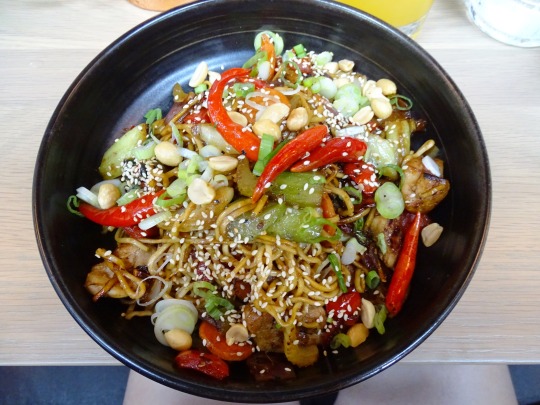









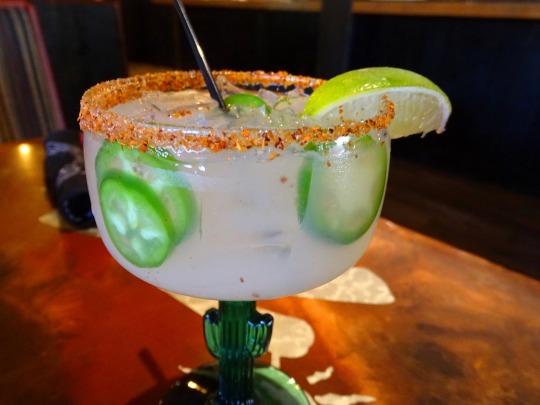
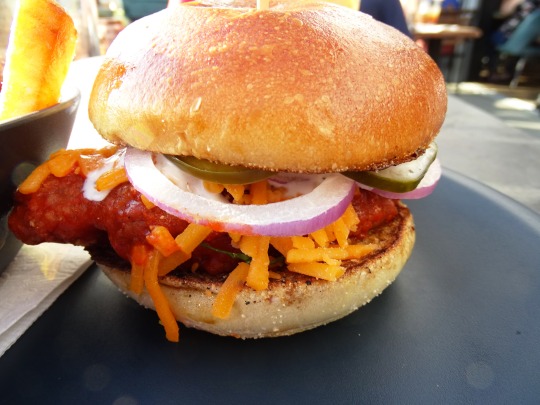










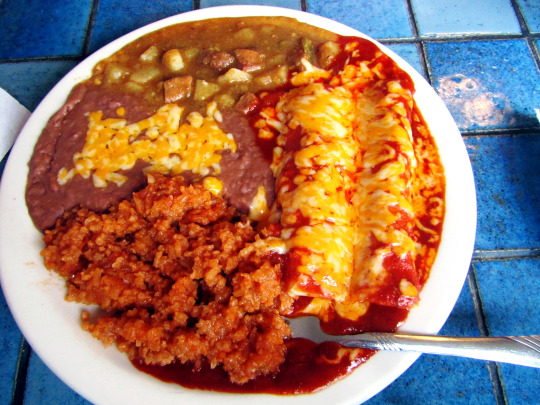




National Hot Heads Chili Day
Chili lovers celebrate National Hot Heads Chili Day on January 17 every year. On this day, chili heads, heat-seekers, and extreme eaters try out the spiciest chilis. National Hot Heads Chili Day is celebrated with habanero-eating challenges, fancy-dress contests, and cook-offs of popular recipes. Chilis are also made to take the official Scoville heat scale. This doesn’t mean that you have to be a daredevil to celebrate the day — anyone who likes their meal a little hot can celebrate the day! Spices and chilis add a distinct flavor to the dish. Thai, Indian, Creole and Caribbean dishes are famous for their heat content and boast of some excellent gastronomic experiences!
History of National Hot Heads Chili Day
We don’t quite know how National Hot Heads Chili Day came to be but it’s safe to say that one fine day all the chili lovers got together and decided to celebrate hot and spicy food. This makes sense given how humans have always had a knack for chilis in their food — the first recipes for spicy foods go back to 6,000 years! This means that humans have been enjoying spicy food for quite some time. While the foods that we enjoy today may have changed and recipes altered, we still love spicy food. Unlike other animals, humans prefer spicy food simply because it tastes so incredible and on a plus side, spices also offer several health benefits.
Spices such as turmeric and cumin that have powerful antimicrobial and antioxidant properties can kill bacteria outright. Studies show that the capsaicin in hot peppers can reduce inflammation and decrease the chances of heart disease. It can also aid in weight loss. In Ayurvedic medicine, the inflammatory properties of chilis have brought relief from many different conditions, such as headaches, autoimmune disorders, and arthritis. Spicy foods can also help fasten your metabolism. Studies also show that certain spices, like pepper chilies, turmeric, cinnamon, and cumin can curb your appetite and improve your metabolic resting rate. Who knew chilis could be so versatile!
National Hot Heads Chili Day timeline
3500 B.C.
Chilis Are Cultivated
Chilis are grown and cultivated for the first time.
1498
Chilis Arrive In India
Vasco-da-Gama reaches Indian shores and introduces India to chilis.
1912
Scoville Organoleptic Test
Wilbur L. Scoville finds a new method to measure the pungency of chilis.
1975
Chili’s
Larry Lavine opens the first Chili's in Dallas.
National Hot Heads Chili Day FAQs
Are chillies native to India?
After the Portuguese arrival in India, chilies were first introduced to Goa, from where they spread to South India. Today, India is the largest producer of red dried chili in the world.
Which chili is the spiciest?
A Guinness Book record holder, Bhut Jolokia is certified as the hottest chili in the world. It is also known as ‘ghost pepper’ and is cultivated in Arunachal Pradesh, Assam, Nagaland, and Manipur.
Which chili is the healthiest?
Green chilies have high water content and zero calories which makes them a healthy choice for those who are trying to shed some pounds.
National Hot Heads Chili Day Activities
Host a dinner party: Chilis are regularly used in Indian, Chinese, and Thai cooking. Host a dinner party and serve these cuisines to friends and family.
Learn about different chilis from around the world: On National Hot Heads Chili Day, learn more about the different chilies that are available around the world. There are so many different types, including Carolina Reapers, Ghost Peppers, Habanero, Red Cayenne Pepper, Serrano, Guajillo, Poblano, Peppadew, and much more.
Organize a cook-off: Invite your friends over and see who can create the best hot and spicy dish. Flavor your dishes with different types of chilis and find out which one is the hottest.
5 Facts About Chilis That Will Blow Your Mind
Chilis can make you happy: They help release feel-good endorphins and dopamine, which results in a sense of euphoria.
The Japanese had an innovative use: Instead of eating them, the Japanese put them in their socks to keep their toes warm.
They are rich in nutrients: They contain large amounts of vitamin C, provitamin A, and beta-carotene.
Only mammals are sensitive to chilis: Capsaicin may burn and irritate the flesh of mammals but birds are completely immune to its effects
They can be used as first aid: Cayenne pepper can help stop bleeding.
Why We Love National Hot Heads Chili Day
A day to enjoy your favorite foods: Most of us love spicy foods but it’s not possible to savor them every day. National Hot Heads Chili Day offers the perfect opportunity to indulge in your favorite spicy food.
Try a new cuisine: If you don't have an adventurous palate, today is the best day to rectify that. Sample spicy foods from India, Thailand, the Philippines, and the Caribbean.
A day to be adventurous: If you are an adventurous foodie, then National Hot Heads Chili Day invites you to taste some of the hottest and steamiest chilies from the world over. Go on a gastronomic adventure today!
Source
#Green Chile Cheeseburger#Chili Cheese Fries#Chili Burger#Green Chili Stew#Chicken Hunan Kung Pao#Eric's Burger#Passionfruit Chili Margarita#National Hot Heads Chili Day#travel#original photography#vacation#USA#Canada#Sweden#restaurant#street food#NationalHotHeadsChiliDay#17 January
4 notes
·
View notes
Text
Superfoods in Indian Diet; right from your kitchen
One of the best things about living in India is its food and the culinary heritage that we experience in every meal that we consume. No wonder; back in medieval times, India was the world’s most sought-after country due to its treasure of spices, hidden from the rest of the world. To the present day, the culinary diversity that we find in India cannot be found anywhere else in the world. However, despite having a plethora of food options that are readily and easily available, we often find ourselves purchasing inexpensive, imported alternatives.
There is a long list of food items that are so affordable that they can be found in every Indian household, yet they are inexpensive and often a luxury overseas, such as in the US. The list includes spices such as turmeric, cardamom, and ashwagandha (15x more expensive), grains such as millets and black gram (10x more expensive), and fruits and vegetables such as guava and jackfruit (20x more expensive). Without waiting any further, let’s learn about the Desi superfoods that you can add to your diet based on their affordability and availability.
Everyday Nutritional Powerhouses: Here, we will talk about the superfoods that are not only affordable but also readily available in our households.
Dal (lentils): Packed with some protein, fiber, and many essential minerals, dal is indeed a staple for a reason. You can explore diverse varieties like moong, masoor, tur, urad, and more for different nutritional benefits.
Leafy Greens: Do not try to underestimate the power of palak (spinach), methi (fenugreek), and sarson (mustard greens). Not only are these loaded with vitamins, minerals, and antioxidants, but they also boost your immunity in the chilling winter season.
Seasonal Fruits: Embrace the abundance of papaya, bananas, guavas, and oranges to fuel your body with vitamins and natural sugars.
Spices: We might know them as spices that add flavor to our meals; spices such as turmeric, ginger, garlic, and chili peppers are more than just flavor enhancers. They are anti-inflammatory powerhouses with many health benefits, such as regulating blood pressure and playing a major role in the prevention and treatment of various cancer types.
Yogurt: It is a natural source of probiotics for gut health, calcium for strong bones, and protein for muscle development. It can be consumed plain, flavored, or even with fruits.
Nourishing Yet Special: This category will include superfoods that are not as easily found in households like the ones mentioned above, yet they are hidden gems that carry more nutrients than you can take.
Millets: Ragi (finger millet), bajra (pearl millet), and jowar (sorghum) are some of the gluten-free grains that are rich in protein, fiber, and certain micronutrients. They’re most commonly used in rotis, dosas, or porridge.
Nuts & Seeds: Chia seeds, flaxseeds, and pumpkin seeds are packed with nutrients such as omega-3 fatty acids, essential minerals, and protein. You can soak them in water overnight before consuming them or directly sprinkle the seeds on your salads, yogurt, or porridge.
Amla (Indian Gooseberry): One of our top favorite superfoods, amla is a vitamin C powerhouse that boosts immunity, aids in digestion, and comes with anti-inflammatory properties. You can enjoy it raw, pickled, or in the form of juice.
Coconut: Another superfood like the Indian gooseberry, coconut water is the hub of electrolytes, while its flesh has healthy fats and fiber. While it grows in the south, coconut can be found easily in the northern regions of India. Although it is mostly consumed raw, coconut’s nectar and flesh also make it a key ingredient in various South Indian dishes.
Jackfruit: This versatile vegetable can be enjoyed unripe or ripe. Ripe jackfruit offers antioxidants and vitamins, while unripe jackfruit provides a meaty texture in vegetarian dishes.
Exquisite and Rare Nutritional Delights: Last but not least, this category will take you through some of the rare, expensive superfoods that are worth every penny that you spend on them.
Saffron: Found in the northernmost region of India, i.e., Kashmir, saffron adds a luxurious touch to many dishes and drinks while boasting anti-inflammatory and mood-boosting properties. Due to its scarcity, saffron is one of the most duplicated superfoods. Purchase saffron only from a reliable dealer.
Black Rice: A nutty-flavored rice rich in antioxidants and fiber and known for its longevity-promoting properties.
Ashwagandha: This powerful herb is an adaptogen that helps the body manage stress and improve stamina.
In the big picture, embracing India's diverse superfoods offers a treasure trove of health benefits while remaining kind to your wallet. From readily available lentils and greens to hidden gems like millets and amla, these culinary powerhouses pack a punch of nutrients without the hefty price tag of imported trends. So, explore the vibrant flavors of India, nourish your body with local abundance, and discover that superfoods don't have to be exotic or expensive.
To learn more about health and diet, follow us on https://freshwey.in/blogs/news
5 notes
·
View notes
Text
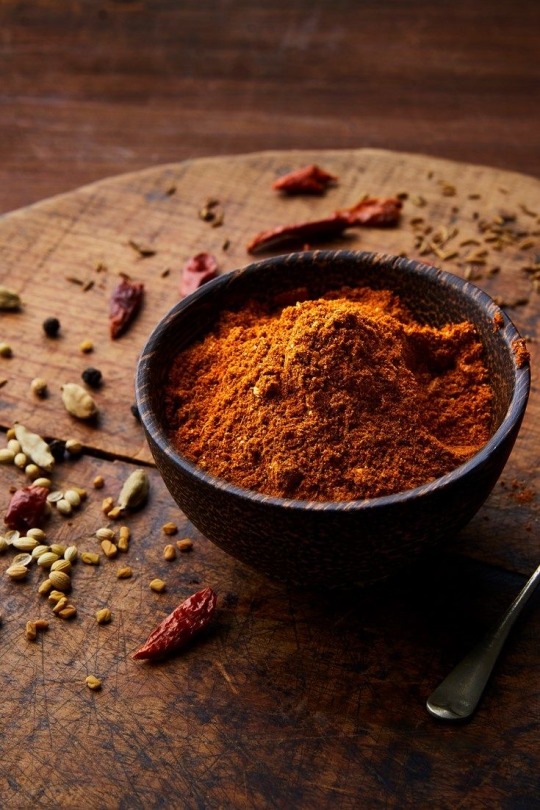
Cooking delicious food using spices is a wonderful way to add flavor, aroma, and depth to your dishes. Spices not only enhance the taste of your food but also offer numerous health benefits due to their rich antioxidant and anti-inflammatory properties. Here are some tips on how to cook delicious food using spices, along with examples of popular spices and their culinary uses:
1. Experiment with spice blends: Mix different spices together to create your own unique spice blends that complement the flavors of your dish. For example, mix cumin, coriander, turmeric, and cinnamon for a warm and aromatic Middle Eastern spice blend.
2. Toast spices before using: Toasting spices in a dry skillet before using them in your dishes can help release their essential oils and intensify their flavors. Be careful not to burn them, as this can make the spices bitter.
3. Use whole spices: Whole spices, such as whole cumin seeds, cardamom pods, and cinnamon sticks, can be toasted, ground, or added directly to dishes for a more intense flavor profile.
4. Add spices at the right time: Different spices have different heat tolerances, so it's important to add them at the right time during the cooking process. For example, delicate spices like saffron and ground spices can be added towards the end of cooking to preserve their flavors.
5. Balance flavors: Use a combination of spices to create a balanced flavor profile in your dishes. For example, sweet spices like cinnamon and nutmeg can be balanced with savory spices like cumin and paprika.
Examples of popular spices and their culinary uses:
1. Cumin: Cumin is a versatile spice commonly used in Middle Eastern, Indian, and Mexican cuisines. It adds a warm, earthy flavor to dishes such as chili, curries, and roasted vegetables.
2. Paprika: Paprika comes in various forms, including sweet, smoked, and hot. It is often used to add color and flavor to dishes like stews, soups, and roasted meats.
3. Turmeric: Turmeric is known for its bright yellow color and earthy flavor. It is commonly used in curry dishes, rice, soups, and smoothies for its anti-inflammatory properties.
4. Cinnamon: Cinnamon is a sweet and aromatic spice that is used in both sweet and savory dishes. It is often added to baked goods, oatmeal, and spiced drinks like chai tea.
5. Ginger: Ginger has a spicy and pungent flavor and is used in both fresh and dried forms. It is commonly used in Asian and Indian cuisines, as well as in teas, soups, and marinades.
By incorporating a variety of spices into your cooking and experimenting with different flavor combinations, you can create delicious and flavorful dishes that will impress your taste buds and elevate your culinary skills. Don't be afraid to get creative and have fun with your spice selection to enhance the taste and aroma of your meals.
#food fight#comfort food#fast food#food for thought#healthy food#food photography#foodie#food#foodpics#foodlover#japanese food#foodmyheart#healthy salad recipes#pasta recipe#salad recipes#soup recipe#pasta recipes#recipe#reciprocity#recipes#recipies#lunch recipes#cozy fall#cozyhome#cozy cozy#healthy lunch ideas#healthy lunch#healthy diet#healthy#healthy living
3 notes
·
View notes